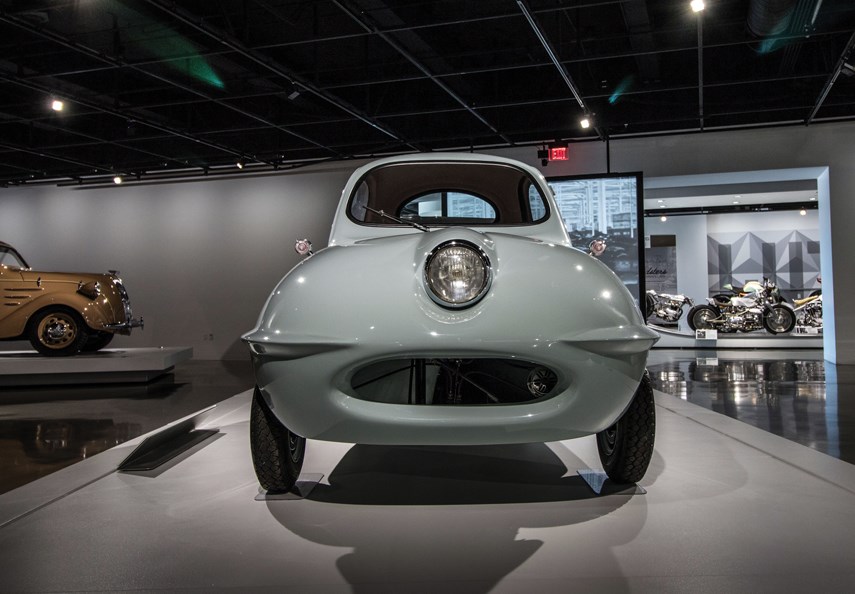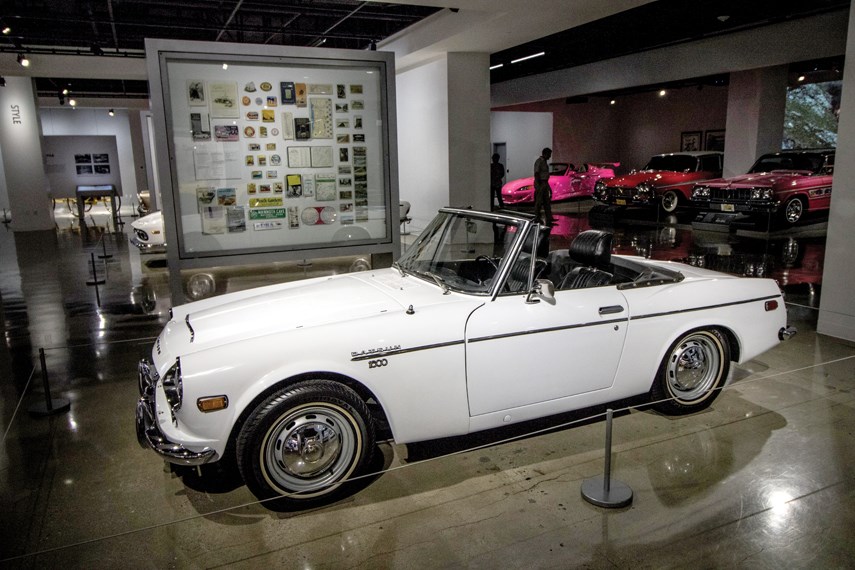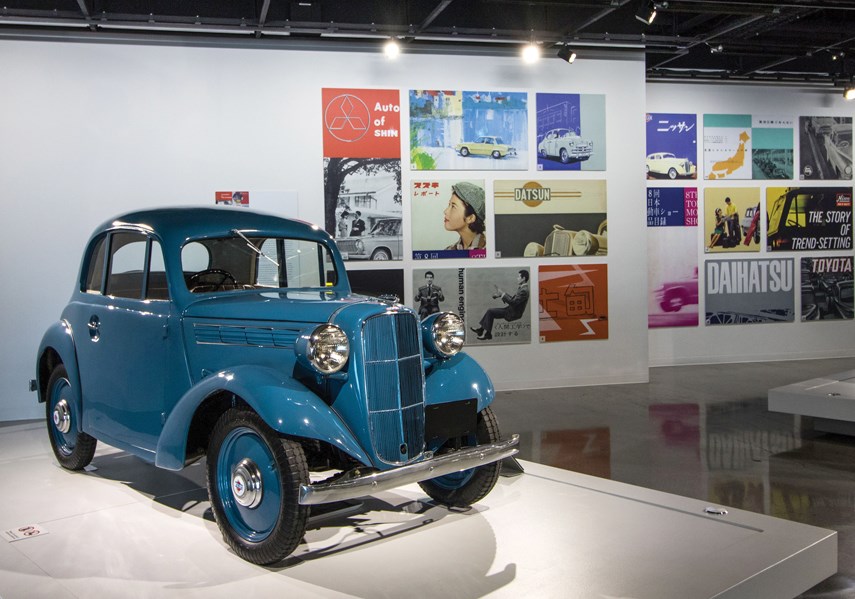The Petersen Automotive Museum is a highlight of any trip to Los Angeles.
Not only does its sprawling Vault contain some eye-widening pieces of automotive history (the Pantera shot by Elvis during a lovers’ spat!), but the carefully curated displays tell stories that even the non-gearhead can appreciate. I go whenever I can.
Most recently, I went to see the museum’s take on Japanese automobiles. I have to confess to being a bit obsessed with Japan, as it’s such an odd mix of the expected and the zany. The first time I got a can of hot coffee out of a vending machine at a highway rest stop north of Tokyo, I was hooked.
Anyway, the Petersen’s current layout mixes a number of different elements of Japanese machinery, from the Fast and Furious style tuning that captured the imagination of a whole new generation of hot rodders, to some rare supercars that represent the pinnacle of the breed, to some really quirky looking first microcars from the post-war period. They had both a one-of-one Nissan R390 GT1 racing car, which is as fast as a McLaren F1, and a Fuji Cabin, which looks like one of the Minions from Despicable Me.
As I strolled through the exhibits, exclaiming over the beauty of a Toyota 2000GT, or the wedgy outrageousness of the Dome Zero, I was struck by something consistent that the early cars had, yet the later ones lacked. There was a delicacy to them, and even if some of the designs were a bit derivative, they were at least polished.

Think about sushi for a moment. That most ubiquitous of Japanese dishes, the best of it is deceptively simple. However, if you’d like, it’s also possible to order some kind of roll that’s composed of twenty different ingredients, served in a riot of colour and flavour. The most expensive stuff is usually the sashimi, carefully cut, presented with minimal fanfare, needing no garnish.
At the Petersen, automotive sashimi took several forms. There was the Honda S600, an incredibly light little coupe with just 57 h.p., that was nimble and quick. There was the Acura NSX, an everyday supercar with no more power that was absolutely necessary, and certainly no variable driving modes. There was the pretty Nissan Silvia, the baby musclecar Celica GT, and the homely little first 1930s Datsun.
Compare all this early stuff to the modern cars lined up in the nearby parkade, and our current driving landscape seems cluttered and confusing. Designs are sharp-edged and aggressive. Interiors are awash with buttons and touchscreens and multiple controllers. It’s nearly impossible to buy a car these days that has a steering wheel that’s only responsible for steering: they all have at least a volume control for your thumb.
When I look back at the history of some of the most popular people’s cars, many lasting designs eschewed this need for frippery. It doesn’t have to be Japanese in origin: there was the VW Beetle, a simple little car that didn’t try to pretend to be anything it wasn’t. There was the first Civic, which was pretty, innovative, and undemanding. Even the Hyundai Pony, which let down the side a bit on reliability, was extremely popular because it was plain, simple transportation with minimal frills.
However, if you look at the no-frills cars that are offered on sale today, many don’t sell particularly well. Basic cars aren’t the hot-sellers, family crossovers are. Often, these are stuffed with extra safety gear to make up for our less-than-perfect driving skills, and crammed with the infotainment that every manufacturer seems to think we want. Perhaps that infotainment might have something to do with the less-than-perfect driving, but I digress.

Why? Well, one reason is, I think we’ve got used to debt. Where once Canadians only bought what we needed, our huge debt-loads from real estate and the cost of living have made us all too happy to move up a model and not skimp on the automotive foie gras.
Worse, however, is that automakers have lost their way a little in offering just what people need in a friendly package. You can’t really blame them, not when Apple seems to have lost some of its cleverness and keeps offering ever bigger phones with bloated screens.
But there is hope. The happy little Honda Urban EV concept is due to become available in some markets in 2019, and it looks like a bit of a return to form for Honda. It’s a fresh, clean design with a hint of retro friendliness. As an EV, it will be inexpensive to maintain, and ideal for urban commuters. Even the interior is relatively simple.
And, while it’s still a fairly expensive proposition, the Tesla Model 3 falls into the same category. It’s not quite an EV for the masses – more a BMW 3-series rival for people who want electric performance – but the Model 3 does offer a very cleanly designed interior.
Tesla, of course, is a brand that people are passionate about, and if there are still plenty of arguments to be had over the company’s financial picture, or the tendency of its CEO to get himself in hot water, the products themselves offer clear appeal. No matter what happens with Tesla, you just know that, fifty years hence, the Petersen will have to put a Model 3 in their display on automotive manufacturing in the early 21st century.
And, hopefully, we’ll be able to look back and see cars like the Honda EV and Model 3 as a point at which people started returning to less complicated cars. When manufacturers started replacing angry grilles with pleasing styling. As the point at which we collectively sighed, turned away from our screens, and decided to keep things simple.
Brendan McAleer is a freelance writer and automotive enthusiast. If you have a suggestion for a column, or would be interested in having your car club featured, please contact him at [email protected]. Follow Brendan on Twitter: @brendan_mcaleer.



